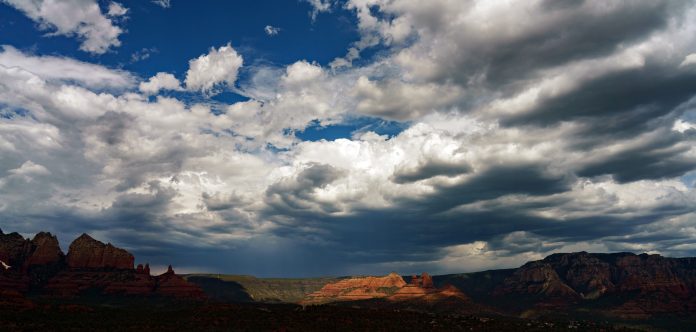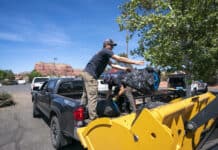The Arizona monsoon officially started on June 15, using the date-only method, but the meteorological method based on dew points means the monsoon has just now arrived.
Despite the official date of June 15, we have not had any precipitation until this weekend, nearly a month later.
May, June and July were exceptionally dry months, keeping us well below our precipitation threshold for the year, which is supposed to be at 10.06 inches, but we are several inches shy.
Now with summer rains having arrived, we might have a substantial increase in rainfall totals through the end of the summer and approach our normals on the year.
We also dodged a bullet this fire season, with very few major fires burning in our region.
The relatively few small blazes started were quickly extinguished by local fire agencies and a few times by firefighting helicopters pre-positioned at the Sedona Airport.
We sincerely thank the Sedona Fire District, Verde Valley Fire District and partner agencies in other parts of the Verde Valley for acting so quickly to tackle and extinguish these blazes.
As we reported in the spring, the U.S. Forest Service is changing its strategy this summer to alleviate pressure from the COVID-19 pandemic.
The prevailing fire strategy is one where wildland firefighting crews allow some blazes to burn in isolated areas to control the dense undergrowth and consume dead and dying trees, returning their nutrients to the soil.
The goal is to gradually return the terrain to the pre-civilized natural environment to reduce the overall need of massive firefighting response.
Before fire control efforts in the 20th century, erratic wildfires ignited by lightning would char small areas and burn themselves out when they ran out of fuel. The aftermath would allow for regrowth from crown to ground.
For decades, the USFS’ strategy was to instead tackle all fires everywhere, which meant that areas that should be burnt weren’t, and Southwestern forests were growing out of control. When small fires hit these overgrown areas that turned into dry tinderboxes, they grew to become firestorms, threatening not just the forest but small towns and communities in their path and requiring massive response from fire crews to tackle them.
While the USFS has moved toward a more natural fire response — not all fires are bad; control them but let them burn — the need to reduce smoke in the skies while people were struggling to breathe while coping with COVID-19 led the USFS to adapt.
Fire crews would instead aggressively and unrelentingly target small blazes with all the resources available and extinguish them before they got out of control.
This strategy is not a long-term one because ultimately, the environment of the Southwest needs periodic wildfires to burn through undergrowth and replenish the soil.
We appreciate that more rain is forecast this month and Sedona is getting periodic outbursts of heavy monsoon rain that will work to dampen the environment and reduce local fire risk.
That said, we also needed the rain. The hellish heat of the last month was unbearable as swamp coolers and air conditioning units were operating at full capacity. Residents and visitors essentially just went from one building to another attempting to beat the heat and stay cool. This also increased the risk of spreading and contracting COVID-19 in these enclosed spaces.
Likewise, midmorning temperatures in the upper 90s meant people who wanted to hike or enjoy the outdoors had to leave the house before dawn before it just became too much to bear. In the evening, temperatures would stay in the 90s, until just about sunset, when it became pointless to go out anyway. With the rains, the temperatures remain high, but not unbearably so, and we can go out to enjoy Sedona without wondering what on us might melt.
Metaphorically, the summer rains in the Southwest high desert have a cleansing power that we yearn for to refresh and reinvigorate. The smell of ozone, clouds rendered by lightning, wet soil, juniper and mesquite dampened by rain are all a necessary aspects of life in Northern Arizona. Perhaps the rains will also help wash away all the chaos that has been 2020.
Christopher Fox Graham
Managing Editor






















